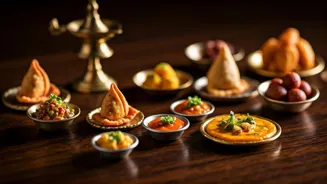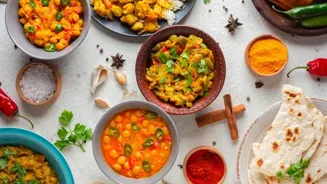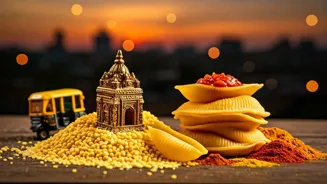Exploring Indian Food Fusions: A Culinary Adventure Awaits! Dive into the fusion trend celebrating global flavors
The Indian culinary scene is currently simmering with innovation, and at the heart of it all
is the delightful dance of food fusions.
Chefs across the country, and even abroad, are fearlessly blending traditional Indian flavors with Western techniques and ingredients, creating dishes that are both familiar and surprisingly new. This isn't about replacing classics, but rather about celebrating them in exciting, unexpected ways.
From naan pizzas to masala chai cheesecakes, the possibilities seem endless, and the results are often spectacularly delicious. This fusion trend is not just about creating new tastes; it's also about showcasing the versatility of Indian cuisine and its ability to adapt to global palates.
Modern chefs blend culinary heritage with global flavors
This movement is largely driven by a generation of chefs who have grown up with a deep appreciation for their culinary heritage, but also with an exposure to international flavors and cooking styles.
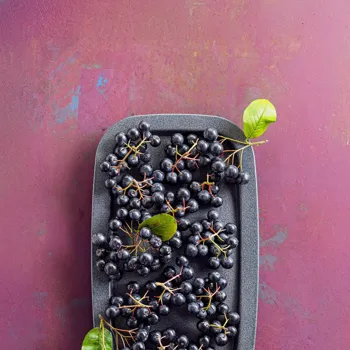
These chefs are experimenting with techniques and ingredients, from sourdough naan to using avocados with Indian vegetables.
Indian cuisine reimagined with global fusion for sustainability
Think about it – the aromatic spices of India, the comforting warmth of familiar curries, now reimagined as fillings for tacos or as a vibrant twist on pasta sauces.
It's about taking the essence of Indian cuisine – the complex spice blends, the unique cooking methods – and applying them to new canvases. Some chefs use techniques like fermentation or molecular gastronomy to present traditional dishes in a modern way.
What’s more fusion is really a way to bring Indian cuisine to a global audience and to help people see the creative depth and possibilities that it has. The best part is that, many chefs are using fusion as a stage to promote sustainability and locally sourced ingredients.
Fusion trend blurs street food, fine dining with gourmet makeovers
One interesting aspect of this fusion trend is how it's blurring the lines between street food and fine dining.
The humble samosa, for instance, might find itself deconstructed and artfully plated in a high-end restaurant, its savory filling transformed into a mousse or a delicate samosa filo pastry.
It’s also been transformed into samosa chaat – a street food dish where its crushed and topped with chutneys, yogurt and spices.
Similarly, the classic vada pav, a popular Mumbai street snack, is getting a gourmet makeover, with chefs experimenting with different types of bread, fillings, and chutneys. It's an approach to bring the rich flavours of street food to a wider audience.
Home cooks and social media drive fusion cuisine creativity
This blend of styles isn’t only happening in high-end restaurants. Home cooks are also experimenting with fusion, creating meals that reflect their own personal experiences and tastes. Social media platforms buzz with DIY fusion ideas, from making upma with quinoa to creating butter chicken pasta.
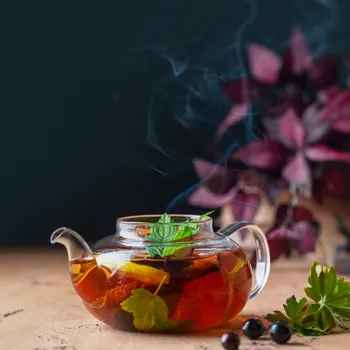
This is allowing a much larger set of people to experiment with fusion cuisine, and it’s also driving much of the creativity that we see in the industry. From food bloggers to home chefs, food creation has really become a much more democractic space.
It allows for creative expression to happen more organically.
Fusion trend popular for new culinary experiences and inclusiveness of Indian culture
But why is this fusion trend so popular right now? There are a few reasons. Firstly, there's a growing desire for new and exciting culinary experiences. People are becoming more adventurous with their food choices, and they're eager to try dishes that push the boundaries of flavor and texture.
Secondly, there's a greater awareness of global cuisines. With the rise of travel and food media, people are becoming more familiar with different culinary traditions, and they're inspired to try them out for themselves.
Finally, this fusion trend speaks to the adaptability and inclusiveness of Indian culture. Indian cuisine has always been influenced by other cultures, and its ability to absorb and integrate new ideas is one of its greatest strengths.
Food fusion requires respect for cuisines and cultures to avoid misrepresentation
However, many believe that there is a right and wrong way of approaching food fusion. It's not about haphazardly throwing together ingredients, but rather about understanding the underlying principles of both cuisines and finding ways to create a harmonious balance.
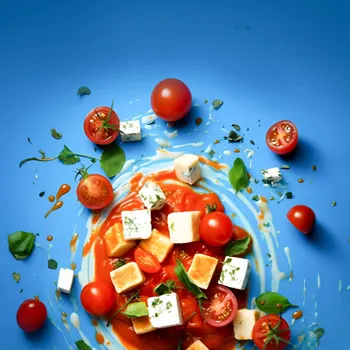
When done well, food fusion can be a truly rewarding experience, offering a glimpse into the endless possibilities of culinary creativity. There is the risk of cultural appropriation, or misrepresenting cuisines and cultures.
It is important to have respect for the origin of ingredients and dishes, learning and understanding those traditions and how to give it a new spin through innovation.
AI Generated Content. Glance/InMobi shall have no liability for the content

